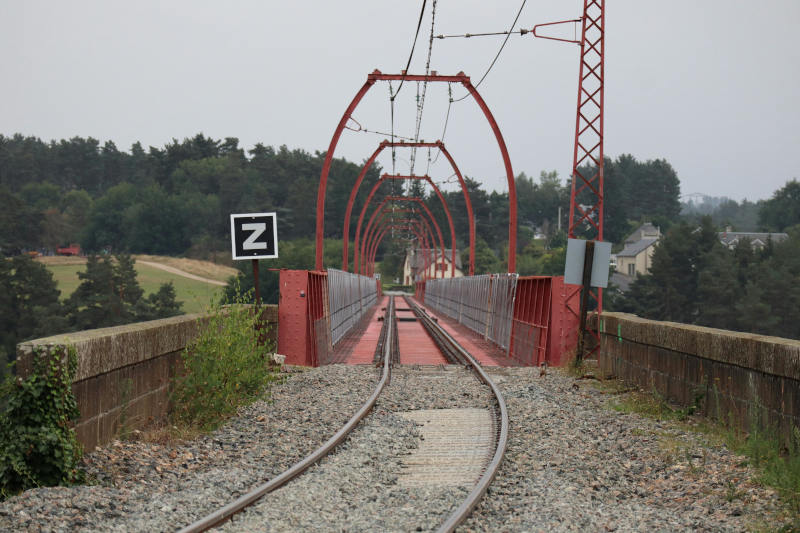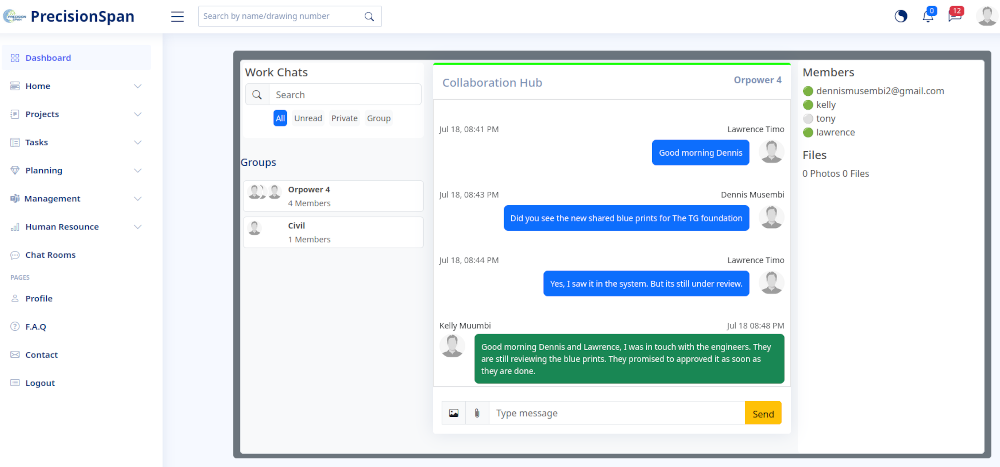
Why Construction Projects Fail: Top Pitfalls and How to Avoid Them
Construction projects, by nature, are complex and multilayered undertakings. Whether it’s building a residential housing estate, a commercial skyscraper, or a critical piece of infrastructure, each project involves numerous moving parts, strict deadlines, budgets, compliance regulations, and the coordination of multiple teams. Despite the best efforts of developers and contractors, a large percentage of construction projects still fail to meet deadlines, stay within budget, or deliver the expected quality. In fact, according to McKinsey, large construction projects often take 20% longer than scheduled and can run up to 80% over budget. These statistics are not merely numbers; they reflect widespread systemic issues in how construction projects are managed.
Understanding the root causes of failure is the first step toward preventing them. In this blog post, we dive deep into the major pitfalls that derail construction projects. We also provide actionable solutions rooted in modern tools and best practices, many of which are built directly into PrecisionSpan, a smart construction project management system designed to bring control, visibility, and collaboration to every phase of the construction lifecycle.
1. Inadequate Project Planning
Poor planning is arguably the most common and damaging reason why construction projects fail. The planning phase is the foundation upon which every subsequent activity rests. When that foundation is shaky, when schedules are unrealistic, milestones are vague, or dependencies are ignored, the entire project is at risk of collapse. For example, failing to account for seasonal weather patterns, permit acquisition delays, or material lead times can create unanticipated bottlenecks. Similarly, when site logistics are not properly planned, it can lead to equipment congestion, resource underutilization, and increased safety risks.
Good planning involves more than just scheduling tasks. It means breaking down every aspect of the work into detailed segments, analyzing task dependencies, assigning realistic durations, and mapping out contingencies. Construction teams should adopt planning methodologies like the Work Breakdown Structure (WBS), the Critical Path Method (CPM), and integrate planning tools that offer real-time visibility. With a tool like PrecisionSpan, teams can not only build detailed schedules but also monitor live progress, adjust timelines dynamically, and keep all stakeholders aligned in real time.
2. Unreliable Budget Estimates and Cost Overruns
Budget overruns are another major factor contributing to project failure. Cost estimation errors can stem from a variety of sources, underestimating labor costs, failing to include indirect expenses, or relying on outdated material pricing. When estimates are done manually or across disconnected systems, there’s a higher chance of human error, data duplication, or crucial items being left out.
One common scenario involves cost creep: a project starts with a reasonable budget, but as small changes accumulate, additional scope requests, unforeseen ground conditions, or labor inefficiencies, the budget begins to swell uncontrollably. Before long, the project is hundreds of thousands of dollars over budget, with no clear justification.
The solution lies in adopting a more integrated, real-time approach to budgeting. Construction firms must move beyond static spreadsheets and implement cost management systems that update with current material prices, track labor productivity, and log expenditures as they occur. PrecisionSpan, for example, helps project managers compare projected costs with actual expenses, flag anomalies early, and make budget adjustments before problems escalate.
3. Communication Breakdowns Between Teams
Construction projects often involve a mix of stakeholders: owners, architects, engineers, subcontractors, and regulatory bodies. When communication between these entities is delayed, inconsistent, or misinterpreted, it can lead to serious errors, duplication of work, and disputes. A classic example is when a revised architectural drawing is shared with the design team but not updated on the jobsite, resulting in crews building from outdated plans and requiring expensive rework.
Lack of communication is often rooted in the use of fragmented tools. Emails, phone calls, text messages, and informal chats are no replacement for centralized communication systems. Moreover, the absence of real-time updates means that information gets buried, missed, or lost during critical moments.
A modern project needs a unified communication channel where drawings, documents, approvals, requests for information (RFIs), and progress updates can all be tracked and shared transparently. PrecisionSpan addresses this by offering a centralized platform where all communication is logged, accessible, and synchronized across teams. With mobile and cloud access, even field workers can receive real-time updates, eliminating the risk of miscommunication and ensuring everyone works off the same information.
4. Scope Creep and Poor Change Control
One of the most common and underestimated threats to a construction project is scope creep. This occurs when the project's requirements grow beyond what was initially agreed upon, without proper control or assessment of impact. It often begins innocently: a client requests a few additional fixtures, then asks for upgraded materials, then reconfigures part of the layout. While each change may seem minor, together they can drastically increase workload, timeline, and budget.
The real problem arises when these changes are approved informally or are not documented through a formal change order process. Subcontractors are left in the dark, project timelines are thrown off, and cost estimates become irrelevant.
To manage this, a robust change control process must be implemented. Every requested change should go through a standardized review, including cost impact, time delay, and resource requirements. Only after formal approval should the change be incorporated. PrecisionSpan includes built-in change order tracking, approval workflows, and cost estimation tools that ensure every change is accounted for and communicated transparently across the project team.
5. Labor Shortages and Mismanagement
The construction industry is currently facing a significant labor shortage, especially when it comes to skilled tradespeople. A lack of qualified workers leads to delays, reduced productivity, and compromised quality. Even when sufficient labor is available, improper allocation of tasks, poor shift planning, and lack of supervision can waste valuable hours and inflate labor costs.
Workforce mismanagement also creates morale issues. Crews may be sent to sites without adequate preparation, left waiting for materials, or asked to redo poorly defined work. Over time, this leads to high turnover, burnout, and a tarnished reputation in the labor market.
To counteract this, construction managers should adopt labor management systems that allow for real-time scheduling, task tracking, and productivity monitoring. PrecisionSpan provides workforce dashboards where managers can assign and reassign tasks on the fly, track hours worked, and balance workloads across teams and sites. This ensures optimal use of labor and helps avoid unnecessary delays and costs.
6. Resistance to Technology
Despite the availability of highly advanced construction technologies, many firms still resist adopting new tools. Reasons range from cost concerns and lack of training to simple resistance to change. However, relying on outdated methods like paper-based scheduling, manual data entry, and isolated spreadsheets in today’s fast-paced environment puts projects at a severe disadvantage.
For example, manual entry of material inventory can lead to stockouts or over-purchasing. Paper-based punch lists can get lost or delayed. Spreadsheet-based scheduling lacks real-time adaptability. The cumulative effect of these inefficiencies results in wasted time, higher costs, and a reduced ability to adapt to change.
The solution lies in digital transformation. Firms must invest in platforms that unify project planning, execution, and reporting into a single ecosystem. PrecisionSpan offers features like real-time dashboards, mobile inspections, automated reporting, and AI-assisted planning that not only boost efficiency but also improve decision-making through data-driven insights.
7. Failure to Identify and Manage Risks
Every construction project carries inherent risks, weather disruptions, equipment breakdowns, subcontractor defaults, political interference, and so on. The difference between successful and failed projects is how well those risks are identified and mitigated. Many projects skip formal risk analysis entirely, choosing instead to respond reactively when something goes wrong.
For instance, failure to anticipate delays in steel delivery can delay structural framing by weeks, cascading into a much larger delay across plumbing, HVAC, and finishing work. These are not hypothetical situations, they happen frequently in underprepared projects.
A successful project includes a formal risk register that identifies potential risks, their likelihood, potential impact, and mitigation plans. PrecisionSpan enables this with built-in risk tracking modules. Teams can assign risk owners, track mitigation strategies, and receive alerts when conditions on the ground change.
8. Supply Chain Disruptions and Poor Procurement
In the post-COVID construction world, supply chain issues have become even more pronounced. Material shortages, price volatility, and transportation delays are now part of the new normal. If your procurement process isn't agile and well-integrated, your project will suffer.
Many firms still rely on manual procurement, calling suppliers, maintaining paper POs, or emailing quotes. This not only slows things down but also leads to pricing inconsistencies, unverified deliveries, and lack of audit trails.
Smart procurement is proactive, data-driven, and integrated. Tools like PrecisionSpan allow project managers to request quotes, compare vendor bids, track delivery timelines, and adjust orders based on real-time consumption. By integrating procurement into the broader project timeline, teams can reduce material waste, avoid stockouts, and stay ahead of delays.
9. Compliance Failures and Legal Disputes
Construction projects must comply with a wide range of building codes, safety regulations, environmental policies, and contract laws. A single misstep, such as a missed inspection, a safety violation, or a contractual breach, can result in hefty fines, stop-work orders, or even lawsuits. Compliance is not just a legal requirement; it's a business necessity.
The problem is that compliance is often handled manually. Site supervisors may forget to log safety briefings. Permits may expire without notice. Documentation may be scattered across emails, folders, or paper binders.
A centralized compliance system can prevent this. PrecisionSpan helps contractors stay compliant with real-time alerts for upcoming inspections, automated safety logs, digital permit tracking, and version-controlled document repositories. With everything stored and tracked in one place, the risk of compliance failure is drastically reduced.
Conclusion: Stop Failure Before It Starts
Construction project failure isn’t inevitable, but it is common when traditional methods are used in a modern, fast-paced, high-stakes environment. The problems we’ve discussed, poor planning, budget overruns, fragmented communication, labor mismanagement, and weak compliance, are deeply interconnected. Addressing just one in isolation may not be enough. Success lies in implementing a holistic, technology-enabled construction management strategy that empowers teams with real-time data, streamlined processes, and seamless collaboration.
PrecisionSpan is built with these exact needs in mind. Whether you’re managing a small residential build or a multi-million dollar commercial development, PrecisionSpan gives you the tools to control budgets, manage timelines, enhance field communication, and keep your teams compliant and productive.
Ready to bring order to your construction projects and avoid these common pitfalls?
Try PrecisionSpan today and see how better planning, smarter budgeting, and real-time collaboration can take your builds to the next level.
Explore Features
Get Started Free












0 Comments